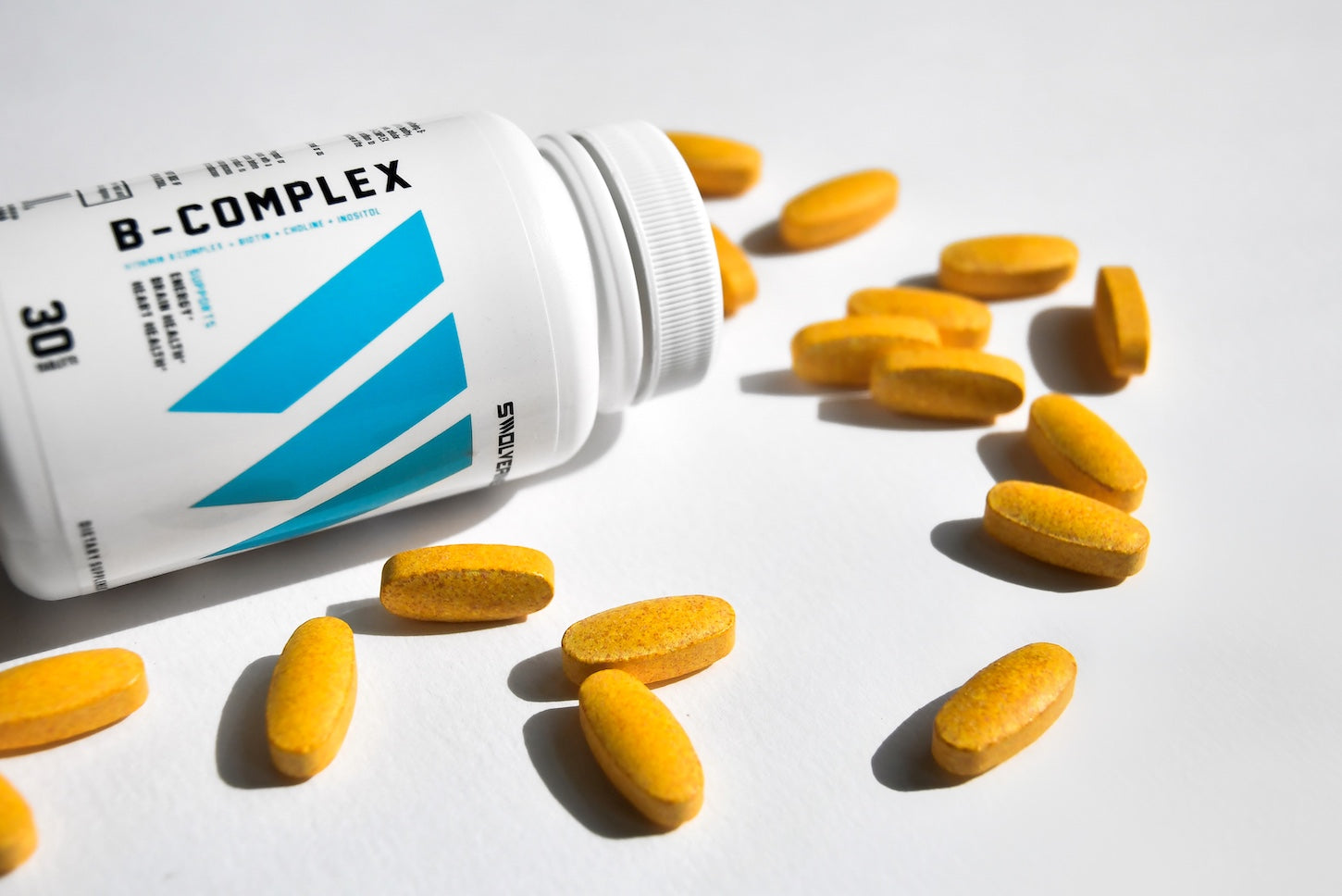Have you ever taken a moment to ponder the vibrant yellow hue of your urine and wonder what it signifies? The mystery behind this coloration lies in the wonders of a vital nutrient - Vitamin B2, also known as riboflavin. In our article, 'Unveiling the Yellow Mystery: The Vitamin Behind Your Vibrant Urine Color,' we delve into the fascinating connection between your urine color and the presence of this essential vitamin in your diet.
As we unlock the secrets of Vitamin B2, you'll discover how this crucial nutrient plays a pivotal role in maintaining your overall health and well-being. From energy production to skin health, Vitamin B2's impact goes far beyond just urine coloration. Join us on a journey to unravel the yellow mystery and gain a newfound appreciation for the significance of this often-overlooked vitamin in your daily life.
Understanding the Role of Vitamins in Urine Color
Urine color can serve as an insightful indicator of our body's internal processes—including hydration levels, dietary choices, and overall health. Among the many factors influencing urine color, vitamins play a significant role, especially water-soluble vitamins like the B-complex. These vitamins dissolve in water and are excreted through the urine, often imparting vibrant hues that vary in intensity.
As our bodies metabolize nutrients, any excess that isn’t utilized is eliminated via urine—leading to observable changes in color.
Why Do Vitamins Change Urine Color?
The connection between vitamins and urine color is particularly evident with riboflavin (Vitamin B2). When consumed in adequate amounts, riboflavin can cause urine to take on a bright yellow or neon-yellow tint. This effect is harmless and simply reflects the body's process of metabolizing and eliminating excess nutrients.
“B-complex vitamins, particularly B2 (riboflavin) and B12, are well known for producing vivid yellow urine when excreted,” says Howard E. LeWine, M.D. of Harvard Health Publishing [Harvard Health].
In addition to B2, vitamin B12 can darken the hue to a deeper yellow, while other supplements and medications may turn urine orange, blue, green, or even reddish, depending on their formulation.
What Urine Color Can Tell You About Hydration and Health
Urine color is also a window into your hydration status:
-
Light yellow or pale straw: Indicates adequate hydration.
-
Dark yellow or amber: Suggests dehydration or concentrated urine.
-
Cloudy or murky: May signal infection or high phosphate levels.
-
Bright or fluorescent yellow: Often linked to riboflavin supplementation.
Persistent unusual urine colors—like red, brown, or green—should be discussed with a healthcare provider.
The Significance of Vitamin B2 (Riboflavin)
Riboflavin's Role in Energy and Metabolism
Vitamin B2 is part of the B-vitamin complex, essential for:
-
Energy production
-
Cellular growth and function
-
Metabolism of fats, carbohydrates, and proteins
Riboflavin acts as a coenzyme in key metabolic pathways that convert food into usable energy. Without sufficient riboflavin, the body struggles to perform these processes efficiently.
A study by O'Callaghan and Zschocke (2019), published in the Journal of Inherited Metabolic Disease, emphasizes riboflavin’s importance in mitochondrial function and energy metabolism [SpringerLink].
Antioxidant Defense and Tissue Health
Riboflavin is also a powerful antioxidant, playing a critical role in reducing oxidative stress and supporting:
-
Skin and eye health
-
Tissue repair and integrity
-
Mucous membrane function
A deficiency in riboflavin may cause symptoms such as:
-
Cracked lips or corners of the mouth
-
Sore throat
-
Inflammation of the tongue and lining of the mouth
-
Skin disorders and sensitivity to light
Foods Rich in Vitamin B2
Animal-Based Sources
Dairy products are among the best dietary sources of riboflavin:
-
Milk
-
Yogurt
-
Cheese
These not only support riboflavin intake but also provide calcium, protein, and other essential nutrients.
Eggs are another excellent source, offering about 15% of the daily recommended intake of riboflavin per large egg. They're highly versatile and easy to add to any meal.
Plant-Based Sources
Plant-based foods also offer riboflavin and support diverse dietary needs:
-
Leafy greens: Spinach, kale, broccoli
-
Nuts and seeds: Almonds, sunflower seeds
-
Whole grains: Brown rice, oats, quinoa
According to the National Institutes of Health Office of Dietary Supplements, the Recommended Daily Allowance (RDA) for riboflavin is 1.1 mg for women and 1.3 mg for men [NIH ODS].
By incorporating both animal- and plant-based sources into your routine, you can easily meet your daily needs and enjoy the wide-ranging health benefits of riboflavin.
Key Takeaways
-
Bright yellow urine is often caused by excess vitamin B2 (riboflavin) and is generally harmless.
-
Urine color is a helpful sign of hydration status and nutritional intake.
-
Riboflavin is essential for energy, tissue repair, and antioxidant defense.
-
Rich food sources include dairy, eggs, leafy greens, nuts, and whole grains.
Health Implications of Changes in Urine Color
Urine color can reflect various health conditions, dietary habits, and hydration status. While a vibrant yellow hue, often linked to riboflavin (Vitamin B2), may indicate adequate vitamin intake, other color changes could signal underlying issues. For example, darker urine may suggest dehydration, which can result from insufficient fluid intake, illness, or excessive sweating.
Foods and Medications That Influence Urine Color
In addition to hydration, certain foods and medications can affect the color of urine. Beets may cause a pink or red appearance (a condition known as beeturia), while asparagus might give urine a greenish tint due to sulfur-containing compounds.
Some medications and supplements can cause even more profound changes:
-
Bright orange: May result from rifampin or phenazopyridine
-
Blue or green: Possible side effects of medications like amitriptyline or propofol
-
Dark brown: Can occur with antimalarials or laxatives
According to the Mayo Clinic (2022), medications and supplements frequently alter urine color and should be considered before assuming a medical concern [Mayo Clinic].
Understanding these influences helps distinguish between benign causes and those requiring further medical attention.
Persistent Urine Color Changes and Associated Symptoms
While temporary color shifts are often harmless, persistent changes—especially when accompanied by pain, burning, or cloudiness—may indicate medical conditions such as:
-
Urinary tract infections (UTIs)
-
Kidney disorders
-
Liver dysfunction
Urine that appears dark, cloudy, or foul-smelling could signal an infection or inflammation in the urinary tract. Tracking urine color regularly is a simple yet effective method for staying in tune with your internal health and identifying when to seek medical evaluation.
Tips for Maintaining Optimal Vitamin B2 Levels
Daily Diet Strategies
Maintaining optimal levels of Vitamin B2 (Riboflavin) supports energy metabolism, cellular health, and antioxidant defense. The best strategy is to consume a balanced and varied diet that includes:
-
Dairy products (milk, yogurt, cheese)
-
Lean meats (especially liver)
-
Eggs
-
Nuts and seeds
-
Green leafy vegetables (spinach, kale, broccoli)
As reported by the National Institutes of Health Office of Dietary Supplements, the RDA for riboflavin is 1.3 mg/day for adult men and 1.1 mg/day for adult women [NIH ODS].
Cooking Methods That Preserve Riboflavin
Riboflavin is sensitive to light and heat, meaning certain cooking and storage methods can reduce its nutritional value. To preserve riboflavin content:
-
Store dairy in opaque containers to prevent light exposure
-
Use steaming or microwaving over boiling to reduce nutrient loss
-
Minimize cooking times when preparing leafy greens
These small adjustments can make a big difference in maintaining the vitamin density of your meals.
Supplementation for Restricted Diets
Those on plant-based or restricted diets—such as vegans or individuals with food allergies—may benefit from B2 supplementation, especially if dietary intake is insufficient. However, it's essential to consult with a registered dietitian or healthcare provider before starting any supplement regimen to ensure proper dosage and compatibility with existing health conditions.
How Hydration Affects Urine Color
Pale Yellow vs. Dark Urine
Hydration plays a central role in determining urine color:
-
Pale yellow or clear urine is typically a sign of good hydration.
-
Amber or honey-colored urine often points to dehydration.
Well-hydrated kidneys can effectively dilute waste products, whereas dehydration forces them to conserve water, leading to more concentrated urine.
“Dark yellow urine is usually a signal that your body is conserving fluids,” says Dr. John S. Clair, nephrologist, in a Cleveland Clinic interview [Cleveland Clinic].
Urination Frequency and Fluid Intake
Hydration status can also be monitored by observing urination patterns:
-
Frequent urination is typical when fluid intake is sufficient
-
Infrequent urination may indicate the need for more fluids
Recognizing these patterns helps individuals respond appropriately to their hydration needs and supports renal health and overall well-being.
Common Misconceptions About Yellow Urine
Misreading Yellow as Dehydration
A frequent misconception is that all yellow urine signals dehydration. In reality, a bright or neon yellow color is commonly caused by vitamin intake, particularly riboflavin, and is not necessarily a reason for concern.
Many multivitamins and fortified foods contain high amounts of B2, which is excreted through urine and causes this vibrant color. This can sometimes lead individuals to mistakenly increase water intake, assuming dehydration is the cause.
Assuming All Urine Color Changes Are Problematic
While it’s true that certain shades (especially dark amber, brown, or red) may suggest a medical issue, minor color variations are often harmless. Factors such as:
-
Dietary choices
-
Hydration levels
-
Supplement use
-
Exercise
can all affect urine color. Rather than jumping to conclusions, it’s important to evaluate all potential contributors before assuming a health issue.
Overlooking Nutrient-Driven Changes
Another overlooked fact is the impact of riboflavin and other vitamins on urine color. These changes are normal and expected during periods of high nutrient intake. For example, prenatal vitamins or B-complex supplements often cause noticeable color shifts and are no cause for alarm.
Seeking Medical Advice for Unusual Urine Color Changes
When to Be Concerned
Although many changes in urine color are related to diet or hydration, there are situations when medical evaluation is necessary. Seek professional guidance if you notice:
-
Persistent red, brown, or dark-colored urine
-
Changes accompanied by pain or burning
-
Unusual odor, frequency, or urgency
These signs may indicate conditions such as urinary tract infections, kidney stones, liver disease, or even hematuria (blood in the urine).
The Role of Clinical Assessment
Healthcare providers can conduct urinalysis, blood work, and imaging tests to assess the cause of abnormal urine colors. Early intervention is key to identifying and managing potential issues before they develop into more serious conditions.
Open Communication With Healthcare Providers
Maintaining a transparent dialogue with your healthcare provider about your hydration habits, supplement use, and dietary intake helps establish a clearer picture of your overall health. This proactive approach enables more accurate assessments and better long-term outcomes.
Conclusion and key takeaways
Understanding the vibrant yellow hue of urine and its connection to Vitamin B2, or riboflavin, reveals the intricate relationship between our diet and health. From energy production to skin health, riboflavin plays a vital role in our well-being, demonstrating that the nutrients we consume have a profound impact on our bodily functions. Monitoring urine color can serve as a valuable tool in assessing hydration and vitamin status, enabling us to make informed dietary choices.
Key takeaways from our exploration include the importance of a balanced diet rich in riboflavin, which can be found in dairy products, eggs, and leafy greens. Additionally, recognizing the influence of hydration on urine color is crucial, as it can indicate our body's need for fluids. Understanding common misconceptions about urine color can help alleviate unnecessary concerns and encourage a more informed approach to health.
Ultimately, if you notice persistent changes in urine color that are not easily explained by diet or hydration, seeking medical advice is essential. By staying attuned to your body's signals and ensuring adequate vitamin intake, you can maintain optimal health and appreciate the complex processes that contribute to our well-being. Embrace the yellow mystery, and let it guide you towards a healthier, more vibrant life.







